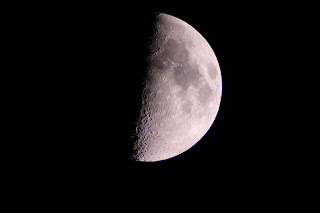So the skies did NOT cooperate for this year's Perseid Meteor Shower..... But my husband, Carl, and I set up viewing out at the Witte Observatory with friends Saturday night into ~ 3 AM Sunday morning in hopes of seeing a few "left over" meteors ;-)
After the Moon finally set about 1:30 AM there were some AMAZING meteor streaks! They seemed a bit randomly located, so it made photographing even more challenging.
When the dew set in.... that made it difficult too.
Here are the four frames I could find capturing meteors "in action." The first photo is of a meteor that seemed to linger in the sky - making all of us "Oh!" and "Awe!." Much fun!!!
Check out the Pleiades in the lower left-hand corner =)
If you look closely you can see the Double Cluster in Perseus near the center.
This is the hardest meteor to see. It's up and to the left of the Double Cluster.
This is the shortest imaged meteor. You can see both the Double Cluster in Perseus AND very faintly the Andromeda Galaxy a little up from center. ;-)
Friday, August 19, 2016
Friday, August 12, 2016
First Quarter Moon M27 M15... and a bit of Stacking =)
I set up my telescope in our back yard this week to take advantage of clear skies and get some photos of the first quarter Moon.
I though the Moon looked especially crisp! =)
I though the Moon looked especially crisp! =)
Love that EarthShine!
I made a video at 10x using Backyard EOS and then stacked 100 images with Registax:
I then took 11 (lights) photos of the Dumbell Nebula, M27. They basically looked like this:
I also took sets of flats, darks, and dark flats. I'm curious if there is stacking software out there I can afford, won't be too complicated, and will do what I want it to. I'm looking at Nebulosity. You can download and try their program for free - but it will add dark lines to processed images. I processed my lights (couldn't get the flats / darks to process...) and here's what I came up with (not bad =):
I ended up the session by trying longer exposures with my autoguider hooked up. The target I chose was the globular cluster M15.
Without guiding (30 second exposure):
With guiding (30 second exposure):
With guiding (120 second exposure =)
Sunday, August 7, 2016
Earthshine and the Milky Way
I set my Polarie up this weekend out at the Witte Observatory for some shots of the Moon and Milkyway.
I am fascinated how the Moon can show display what is know as "Earth Shine," most predominant when it is in its crescent phase.
I am fascinated how the Moon can show display what is know as "Earth Shine," most predominant when it is in its crescent phase.
Then I turned my attention to the Milky Way, starting with the region near Perseus. (I've got my fingers crossed this region of the sky will be "hopping" with meteors we can see next weekend!
I think it's especially "fun" that we can see the Double Cluster and Andromeda Galaxy in these images. =)
Other photos of the Milky Way <3
Subscribe to:
Comments (Atom)




















